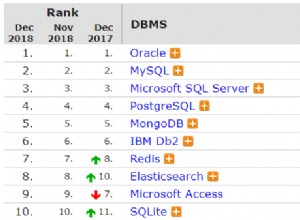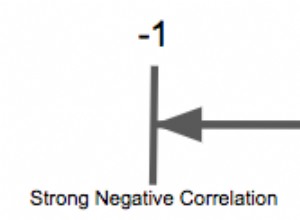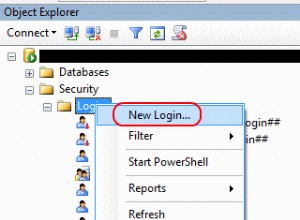Ho modificato la mia risposta data nella prima domanda...
Sarebbe meglio se la tua tabella conservasse i dati della relazione direttamente nelle colonne indicizzate. Prima di modificare la struttura della tua tabella potresti provare questo:
Una tabella con i dati del test
DECLARE @tbl TABLE ( AccountID VARCHAR(100), AccountName VARCHAR(100));
INSERT INTO @tbl VALUES
('11','Acc11')
,('12','Acc12')
,('13','Acc13')
,('11/11','Acc11/11')
,('11/12','Acc11/12')
,('11/111','Acc11/111')
,('11/11/001','Acc11/11/001')
,('11/11/002','Acc11/11/002')
,('12/111','Acc12/111')
,('12/112','Acc12/112');
Questo otterrà i dati necessari in una tabella temporanea appena creata chiamata #tempHierarchy
SELECT AccountID
,AccountName
,ROW_NUMBER() OVER(ORDER BY LEN(AccountID)-LEN(REPLACE(AccountID,'/','')),AccountID) AS ID
,Extended.HierarchyLevel
,STUFF(
(
SELECT '/' + A.B.value('.','varchar(10)')
FROM Extended.IDsXML.nodes('/x[position() <= sql:column("HierarchyLevel")]') AS A(B)
FOR XML PATH('')
),1,2,'') AS ParentPath
,Extended.IDsXML.value('/x[sql:column("HierarchyLevel")+1][1]','varchar(10)') AS ownID
,Extended.IDsXML.value('/x[sql:column("HierarchyLevel")][1]','varchar(10)') AS ancestorID
INTO #tempHierarchy
FROM @tbl
CROSS APPLY(SELECT LEN(AccountID)-LEN(REPLACE(AccountID,'/','')) + 1 AS HierarchyLevel
,CAST('<x></x><x>' + REPLACE(AccountID,'/','</x><x>') + '</x>' AS XML) AS IDsXML) AS Extended
;
Il risultato intermedio
+-----------+--------------+----+----------------+------------+-------+------------+
| AccountID | AccountName | ID | HierarchyLevel | ParentPath | ownID | ancestorID |
+-----------+--------------+----+----------------+------------+-------+------------+
| 11 | Acc11 | 1 | 1 | | 11 | |
+-----------+--------------+----+----------------+------------+-------+------------+
| 12 | Acc12 | 2 | 1 | | 12 | |
+-----------+--------------+----+----------------+------------+-------+------------+
| 13 | Acc13 | 3 | 1 | | 13 | |
+-----------+--------------+----+----------------+------------+-------+------------+
| 11/11 | Acc11/11 | 4 | 2 | 11 | 11 | 11 |
+-----------+--------------+----+----------------+------------+-------+------------+
| 11/111 | Acc11/111 | 5 | 2 | 11 | 111 | 11 |
+-----------+--------------+----+----------------+------------+-------+------------+
| 11/12 | Acc11/12 | 6 | 2 | 11 | 12 | 11 |
+-----------+--------------+----+----------------+------------+-------+------------+
| 12/111 | Acc12/111 | 7 | 2 | 12 | 111 | 12 |
+-----------+--------------+----+----------------+------------+-------+------------+
| 12/112 | Acc12/112 | 8 | 2 | 12 | 112 | 12 |
+-----------+--------------+----+----------------+------------+-------+------------+
| 11/11/001 | Acc11/11/001 | 9 | 3 | 11/11 | 001 | 11 |
+-----------+--------------+----+----------------+------------+-------+------------+
| 11/11/002 | Acc11/11/002 | 10 | 3 | 11/11 | 002 | 11 |
+-----------+--------------+----+----------------+------------+-------+------------+
E ora si verifica un approccio ricorsivo simile come nella mia prima risposta. Ma - poiché ora sta usando una tabella reale e tutta la divisione delle stringhe è già avvenuta - dovrebbe essere più veloce...
WITH RecursiveCTE AS
(
SELECT th.*
,CAST(NULL AS BIGINT) AS ParentID
,CASE WHEN EXISTS(SELECT 1 FROM #tempHierarchy AS x WHERE x.ParentPath=th.AccountID) THEN 1 ELSE 0 END AS HasChild
FROM #tempHierarchy AS th WHERE th.HierarchyLevel=1
UNION ALL
SELECT sa.AccountID
,sa.AccountName
,sa.ID
,sa.HierarchyLevel
,sa.ParentPath
,sa.ownID
,sa.ancestorID
,(SELECT x.ID FROM #tempHierarchy AS x WHERE x.AccountID=sa.ParentPath)
,CASE WHEN EXISTS(SELECT 1 FROM #tempHierarchy AS x WHERE x.ParentPath=sa.AccountID) THEN 1 ELSE 0 END AS HasChild
FROM RecursiveCTE AS r
INNER JOIN #tempHierarchy AS sa ON sa.HierarchyLevel=r.HierarchyLevel+1
AND r.AccountID=sa.ParentPath
)
SELECT r.AccountID
,r.AccountName
,r.ID
,r.ParentID
,r.HierarchyLevel
,r.HasChild
FROM RecursiveCTE AS r
ORDER BY HierarchyLevel,ParentID;
E finalmente pulisco
DROP TABLE #tempHierarchy;
Ed ecco il risultato finale
+-----------+--------------+----+----------+----------------+----------+
| AccountID | AccountName | ID | ParentID | HierarchyLevel | HasChild |
+-----------+--------------+----+----------+----------------+----------+
| 11 | Acc11 | 1 | NULL | 1 | 1 |
+-----------+--------------+----+----------+----------------+----------+
| 12 | Acc12 | 2 | NULL | 1 | 1 |
+-----------+--------------+----+----------+----------------+----------+
| 13 | Acc13 | 3 | NULL | 1 | 0 |
+-----------+--------------+----+----------+----------------+----------+
| 11/11 | Acc11/11 | 4 | 1 | 2 | 1 |
+-----------+--------------+----+----------+----------------+----------+
| 11/111 | Acc11/111 | 5 | 1 | 2 | 0 |
+-----------+--------------+----+----------+----------------+----------+
| 11/12 | Acc11/12 | 6 | 1 | 2 | 0 |
+-----------+--------------+----+----------+----------------+----------+
| 12/111 | Acc12/111 | 7 | 2 | 2 | 0 |
+-----------+--------------+----+----------+----------------+----------+
| 12/112 | Acc12/112 | 8 | 2 | 2 | 0 |
+-----------+--------------+----+----------+----------------+----------+
| 11/11/001 | Acc11/11/001 | 9 | 4 | 3 | 0 |
+-----------+--------------+----+----------+----------------+----------+
| 11/11/002 | Acc11/11/002 | 10 | 4 | 3 | 0 |
+-----------+--------------+----+----------+----------------+----------+




